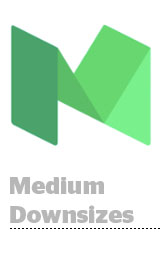 Platforms, which are highly scalable and rely on others’ content, were supposed to have it easier than publishers. But on Wednesday, Medium laid off a third of its staff, a total of 50 people.
Platforms, which are highly scalable and rely on others’ content, were supposed to have it easier than publishers. But on Wednesday, Medium laid off a third of its staff, a total of 50 people.
CEO Ev Williams explained that the sponsored content model offered only “incremental improvements on the ad-driven publishing model,” in a blog post Wednesday. And Medium doesn’t want to be part of that system – the “broken system is ad-driven media on the internet,” he said.
Layoffs were concentrated in sales and support, Williams said. Medium’s head of partnerships, Joe Purzycki, left in November, according to LinkedIn, preceding the announced layoffs. Although the staff cuts came right after Q4, which sees a concentrated chunk of advertising spend, most media companies know months beforehand if trouble’s ahead.
“I don’t think this was a question of lack of sales or cashflow issues,” said a publisher that switched to Medium last year and has been happy with the platform. “If you look back on Medium’s history, you’ll see a meandering path.”
Does pursuing a sponsored content strategy before backing away from it signal weakness in the sponsored content space? Maybe.
Native ad renewals stood at just 33% for 2016, according to data from sales intelligence platform MediaRadar. But MediaRadar also noted that it’s not tough for everyone: A small group of publishers, specifically The Atlantic and sister publication Quartz, garner top renewal rates in the 60-80% range.
But clearly, sponsored content isn’t working for all the publishers (and advertisers) that try it.
“I would think Medium is at a significant disadvantage with sponsored content vs. brands that have deep experience in storytelling, like The New York Times and The Atlantic,” said Jason Kint, CEO of industry trade group Digital Content Next. “Sponsored content is a healthy, growing part of [publishers’] advertising revenue, but it can’t be a replacement for all advertising revenue. It’s a building block, but it’s not going to save the day for newsrooms and media shops.”
But what options does Medium have, if not advertising? Williams itself says it’s “too soon to say.” But Medium has built preliminary tech to support subscriptions and micropayments, which one Medium publisher suspected may factor into future plans.
Medium is leaving behind the most popular way to make money from content. Eighty percent of the revenue from publishers in Digital Content Next comes from advertising, according to Kint, making it by far the most popular way to monetize. And while many are seeing success in sponsored content, that high-touch, custom work comes with the cushion of display advertising revenue streams.
Since Medium is both a tech company and media company, there’s a chance it could swing back to the tech side and explore models that work there, such as charging for its content management system. Or the company could try to find another buyer. Ev Williams tried to sell the company to CEO Jack Dorsey for $500 million, according to a Vanity Fair profile of Twitter this summer.
Medium wanted to reward writers and creators “based on the value they’re creating for people,” Williams said in his post.
That’s tough. Startup Slant News, which pledged to give 70% of revenue to writers, shut down in April. Most YouTube creators earn revenue through direct sponsors, with their pre-roll share representing a cherry on top. Of course, those are ad-supported models.
If Medium failed in advertising, it may all come down to the data – and its lack of it. Facebook and Google, the leaders in the space, have made a business out of collecting and activating data for advertisers.
“Medium has tried to be really good on the consumer side and has been way ahead of the industry in honoring consumer choice and Do Not Track,” Kint said. “They have full privacy, and their pages load super fast. Unfortunately, that breaks the way the current ad marketplace works.”
This post was syndicated from Ad Exchanger.

More Stories
Newsmax Rings the NYSE Opening Bell to Launch Its IPO
Final Deadline for ADWEEK’s 2025 Agency All-Stars Is Approaching
Pete Davidson is Spoken For Again—But This Time, By Verizon